Edie Fake, “Memory Palaces,” at Thomas Robertello,
27 N Morgan St, Chicago, Illinois 60607
January 4 to March 28, 2013
Opening: January 4, 6-8 PM
Blazing Star
Dame Frances Yates, renowned scholar of English proto-science alchemy and mysticism, recounts the history of an architecture-based “art of memory” handed down from Simonides of Ceos to Greek and Roman orators, through Thomas Aquinas and Dominican monks, to Renaissance Italians Giulio Camillo and Giordano Bruno, to eventually influence the logical method of Descartes and the monadic metaphysics of Leibniz during the Enlightenment. Explicating Bruno, Yates says that, “(i)n ‘your primordial nature,’ the archetypal images exist in a confused chaos; the magic memory draws them out of chaos and restores their order, gives back to man his divine powers.” The utilization of spatial structures as tools to link mortal minds back to eternal ideals, and thereby strive for self-perfection, seems a relevant technique to consider in contemplating the icons of local queer historicity lovingly executed in gouache and ballpoint pen on paper by Edie Fake.
The Snake Pit
Now-vanished local gay bars and clubs (La Mere Vipere, The Snake Pit, Club LaRay), a theatre and an art space (Newberry Theatre, Nightgowns), an underground abortion clinic (JANE), and radical newspapers (Blazing Star, Killer Dyke), as well as some invented venues (Night Baths, Shapes), are rendered by Fake as stunning graphic facades, comprised of precise and vibrating patterns, that simultaneously call to mind mausoleums, temples, and rococo storefronts. He draws “gateways” as well, remembrances of departed artists and friends Mark Aguhar, Nick Djandji, Dara Greenwald, Flo McGarrell and Dylan Williams. “The buildings in my drawings are not about nostalgia for a lost time,” he says; “iinstead, they are about re-awakening the impulse to create physical space for queer voices, lives and politics.” Fake sees the series, when hung on a wall together, as a “cohesive neighborhood” that includes, through aspirational memory, the individuals and spaces necessary for a self-sustaining queer community.
Newberry Theater
Despite their communitarian aspirations, Fake’s facades, in their stylistic idiosyncracy, belong to a history of “psychedelic” visionary architecture, from Giovanni Piranesi to A.G. Rizzoli, Archigram, and Bodys Isek Kingelez, a course that opposes, disregards, or seeks to overturn or subvert the efficiency, vastness, frugality, and brutal rationality of industrial-age utopian structures, both literal and figurative. In evoking this former (and older) lineage, in which the approach to space consists not of a harmonizing of uses but of attempts at earthly perfection, Edie Fake carries the torch for a revolutionary dream more fantastic than engineered, an aesthetic gospel of a promised land remembered in stolen moments of prophetic togetherness by a people who live in exile in their own city, in every city.
Shapes
Gateway Dara
This post first appeared on Gaper’s Block.

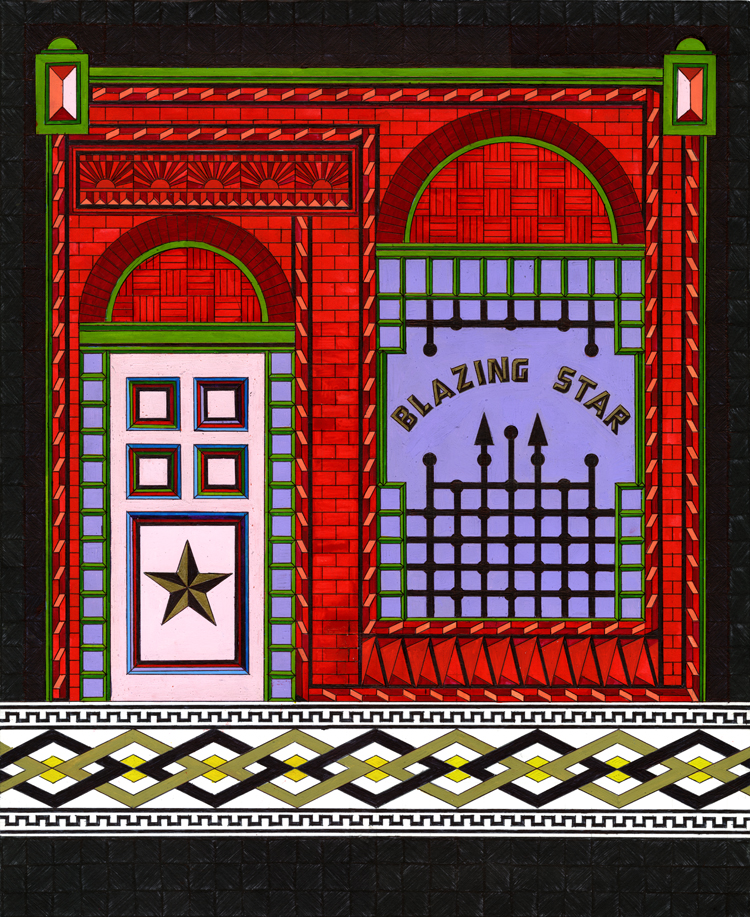
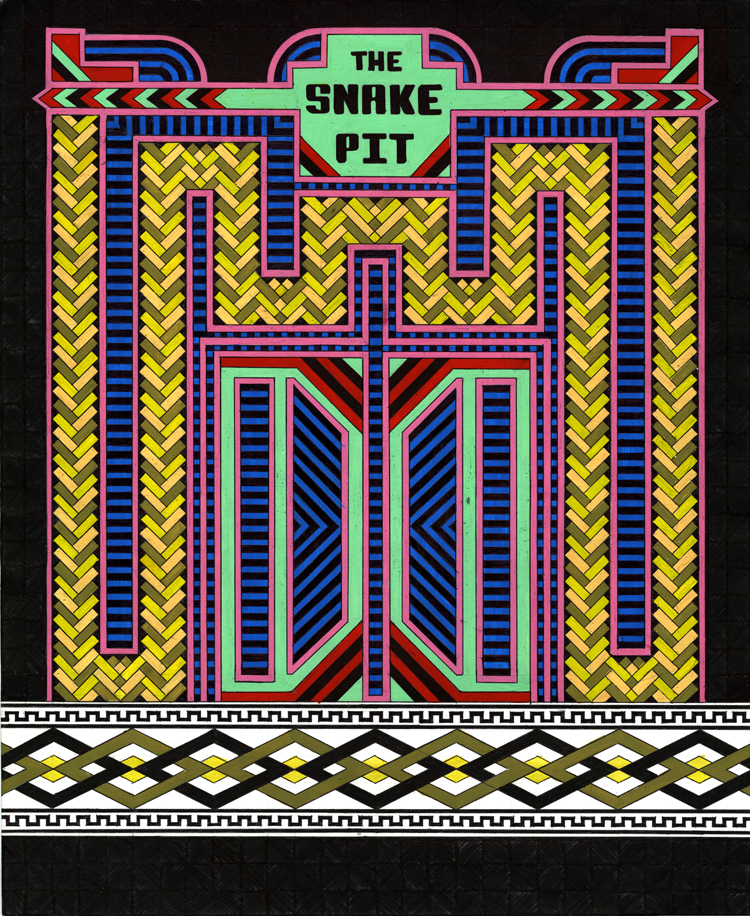
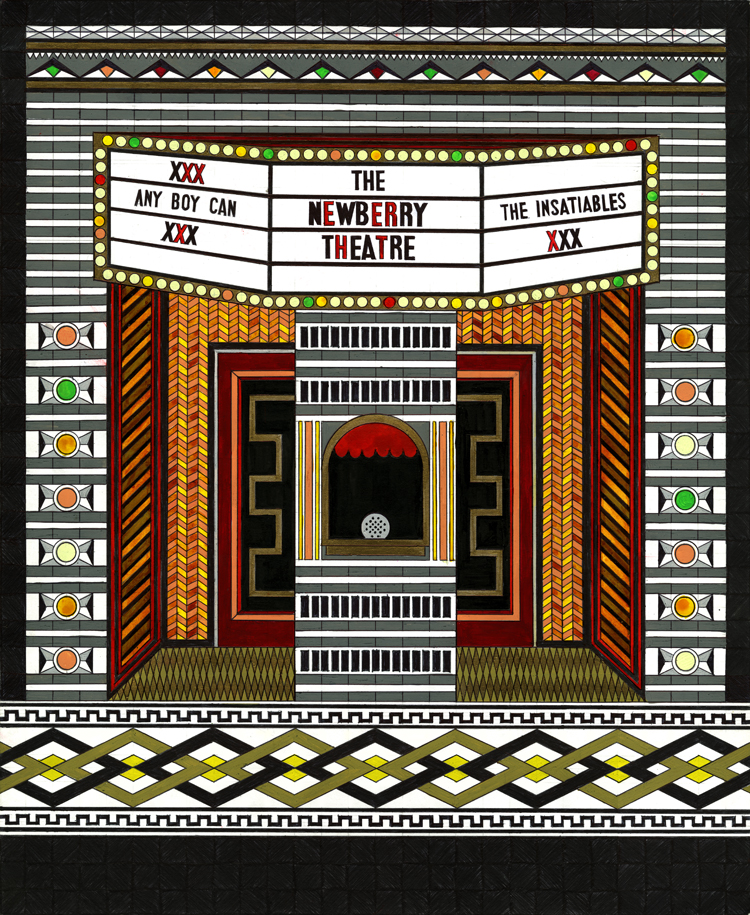
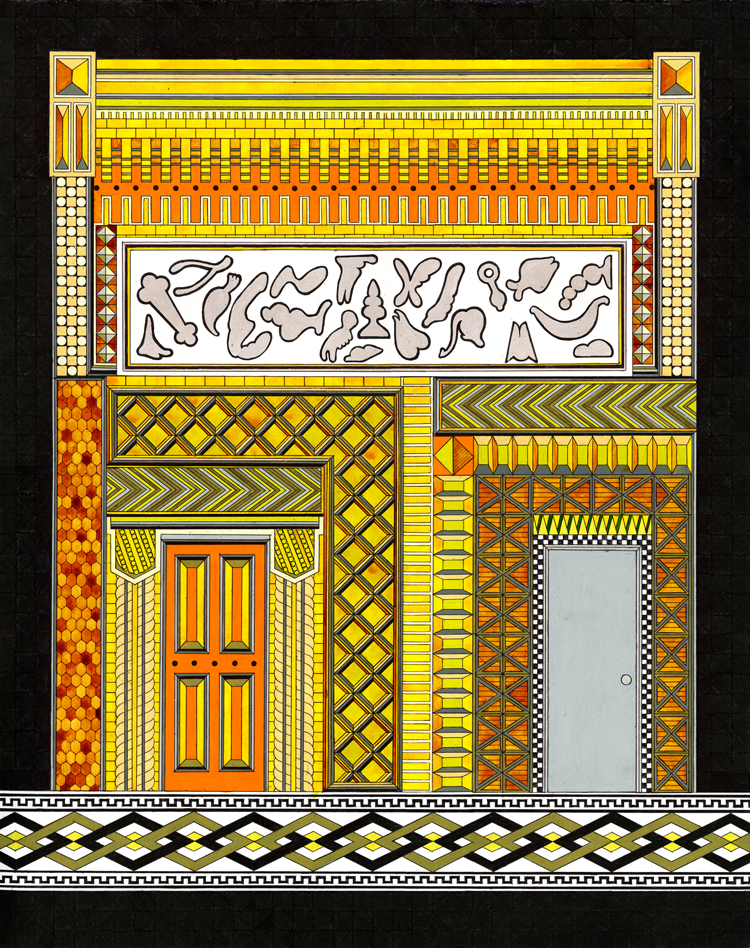
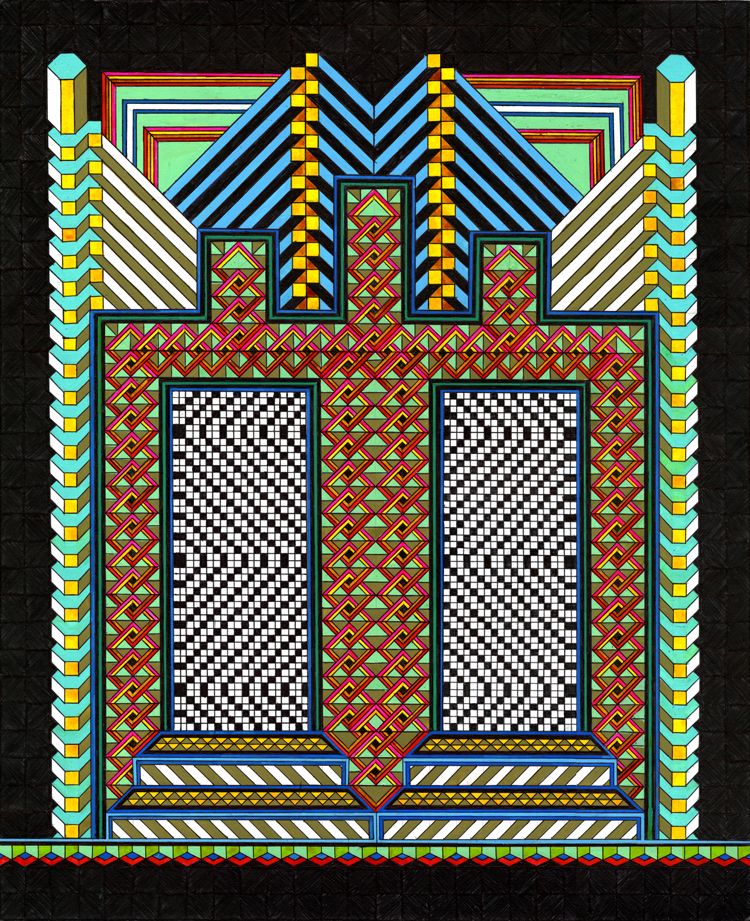
I can’t wait to see Edie’s show. Thanks for posting this link about it! I wish I could make the opening, but I’ll be in Indiana tomorrow night.
I wonder if he’ll compile these images into a book-length collection?
That would be amazing. Maybe we can get Edie to comment on the thread.
I assume everyone knows about his Gaylord Phoenix book right, if none of his other dazzling products? If not, look into it. It will look into you.
My essay on Gaylord Phoenix is here.
And, of course, Edie did out lovely oozy banner up at the top of the site there.
These are great! They also look like something from an 8-bit CPRG, especially the second and the last one — do you know if that was a reference-point for Fake?
Goddammit, I was going to come to the opening tomorrow night, but it turns out I have a family obligation. Sonuvabitch. I’m glad to see some of the work on display here, so I know what I’ll be missing. Beautiful stuff. I’ll be there in spirit, so hi to everybody I’ll be missing!
Edie also did an adaptation of “The Visions of St. Teresa of Avila” for the first volume of The Graphic Canon. I wrote briefly about that story here. Lovely stuff, as always.